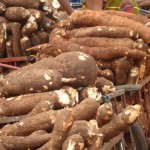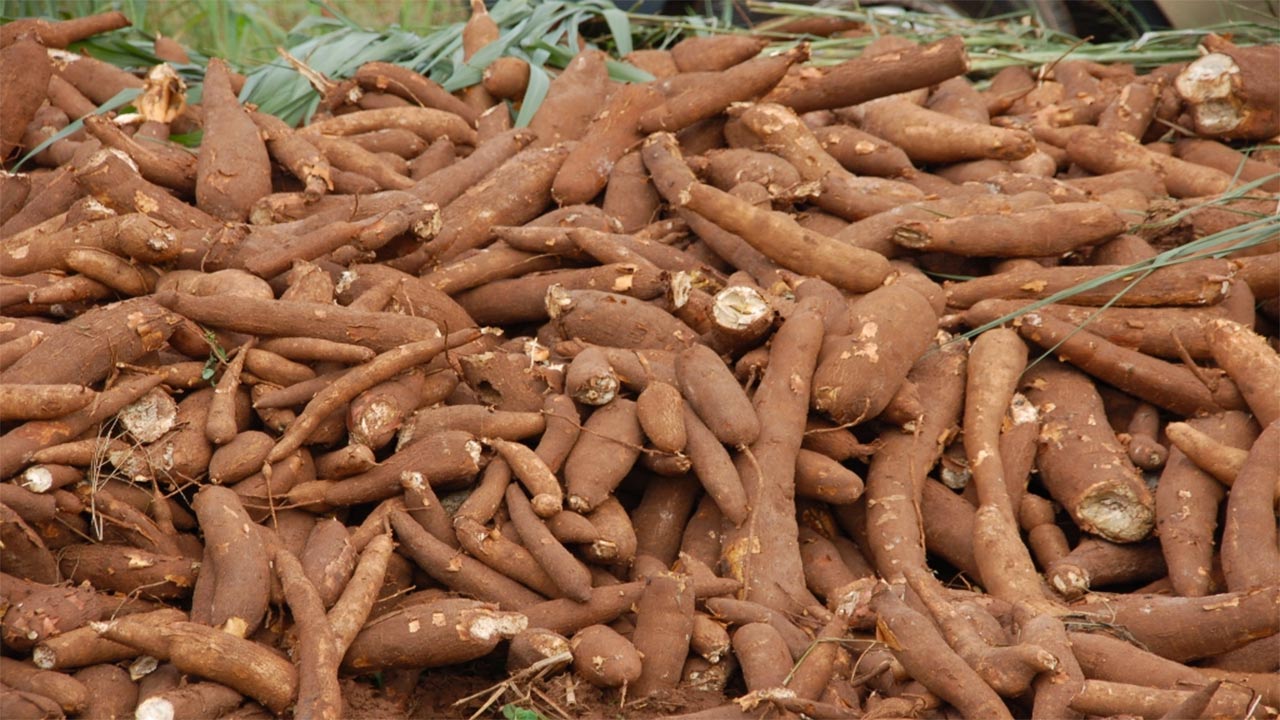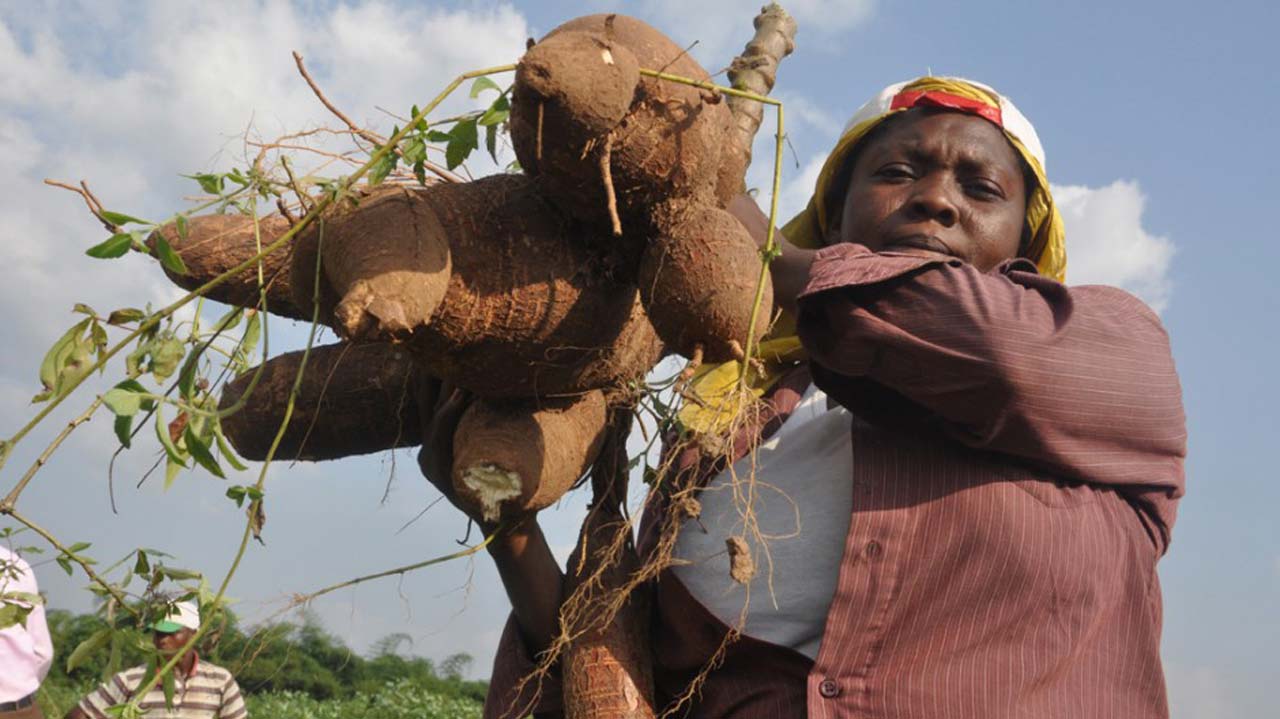 Cassava is one of the most common food crops grown and consumed in many parts of Africa. The crop grows well in various soil types and ecologies. It can be planted alone or in association with many other crops, like maize, groundnuts, vegetables, and rice. Growing cassava is not very labor intensive and usually requires 75–125 person-days per hectare from land preparation to harvesting.
Cassava is one of the most common food crops grown and consumed in many parts of Africa. The crop grows well in various soil types and ecologies. It can be planted alone or in association with many other crops, like maize, groundnuts, vegetables, and rice. Growing cassava is not very labor intensive and usually requires 75–125 person-days per hectare from land preparation to harvesting.
The storage roots can be harvested 9–18 months after planting. Under traditional farming practices, one can expect between 8 and 15 tonnes of
storage roots per hectare of land planted only with cassava.
How do I select a good site for planting cassava?
Cassava grows best in areas with deep and well-drained loamy soils, adequate rainfall, and warm and moist climatic conditions. The factors which guide you to determine if an area will be suitable for growing cassava include vegetation
cover, soil texture and fertility, topography of land, and the field history of the area.
Look for an area with thick vegetation cover:
Sites with dense vegetation cover are likely to have fertile soils. The dense vegetation shades the soil from direct sunlight, reduces the amount of moisture that is lost from the soil through evaporation, and minimizes run-off water which may otherwise cause soil erosion.
The dense vegetation also drops a lot of leaves which rot and add nutrients to the soil. In addition, decaying leaves encourage an increase in the number of earthworms and other small invertebrates in the soil, which in turn help to
increase the air in the soil and make it better for growing cassava.
Look for an area with good soil texture:
The best soil for growing cassava is deep, loamy soil. Such soils are rich in nutrients, low in gravel, hold water well, and are easy to work or till. The way to tell if the soil is loamy is to moisten a small amount of it and try to shape it into a ball. If you press the ball and it falls apart, then your soil is loamy. If it feels
gritty and you are not able to shape the moistened soil into a ball, then the soil is sandy. If you shape the soil into a ball, and the soil does not fall apart when pressed, then the soil contains a lot of clay and is a clayey soil.
Sandy and clayey soils are not the most suitable soils for growing cassava.
Look for an area with fertile soil:
Fertile soils usually have a dark color, for example, dark red or dark brown. The dark color shows that the soil has a lot of organic matter. If the soil looks gray and sometimes contains green or blue spots, it means that there is poor drainage and waterlogging. Do not grow cassava on soils that get waterlogged.
Look for an area with flat or gently sloping land:
The best farmland for cassava is flat or gently sloping. Steep slopes are easily eroded and are therefore not very good areas for growing cassava. Valleys and depression areas are also not very suitable because they usually get waterlogged and do not allow cassava roots to develop well. You may, however, plant early maturing cassava varieties on mounds or ridges in inland valleys during the dry season.
Know the history of the site:
Information such as how the land was previously used, and the types of weeds, diseases, and pests in the area, can help you in selecting a site for your cassava farm. Such information can help you to avoid a site with problems or make good
plans for plant protection.
How do I improve the soil for planting cassava? If you do not select a good site for growing cassava you may have to spend a lot of time and materials to improve the soil. Cassava plants on good soils grow vigorously and are able to
withstand some damage by pests and diseases. The following are examples of cultural practices you can use to improve soil properties.
Manure your farm:
At land preparation, you can add organic manure to the soil to increase soil nutrients, improve soil structure, and improve the ability of the soil to hold water. Organic manure can be in the form of green manure or other dead plant or animal manure. In green manuring, plant foliage (fresh leaves and young green stems) is ploughed into the soil.
Green manure improves soil properties as the foliage rots. Egusi melon and leguminous crops, for example, groundnuts and beans, make good green manure. Inorganic fertilizers can also be applied to increase soil fertility. For example, in southeast Nigeria, the recommended rate for NPK application is 400 kg. per hectare of land.
Prepare suitable seedbeds:
Cassava fields on hilly sites with steep slopes are frequently eroded. The erosion will be severe if the leaf canopy of cassava plants is not thick enough to cover the ground against rain splashes. This happens in young cassava farms and if the varieties have a tall and less branching habit. If you cannot avoid growing cassava on steep slopes you can grow cassava varieties with early, low, and much branching habit to cover the ground quickly and properly against rain erosion. You can also make ridges across the slopes and mulch the ridges to reduce erosion.
Mulch cassava seedbeds:
Mulching involves covering the soil surface with plant materials. Mulching improves the fertility of the soil, increases
the ability of the soil to hold sufficient water for plant growth, and reduces erosion and weed problems. Mulching cassava seedbeds is especially valuable when growing cassava in dry areas and on slopes. Mulching requires very large amounts of plant foliage. Dead plant foliage can be used as “dead mulch”. Sources of good dead mulch are foliage from alley crops, leguminous plants, rice husk, coffee hull and general crop and weed residues. Avoid using weed residues
containing weed seeds, rhizomes, stolons, or tubers as mulch because these can increase weed problems on your farm. Straws of maize and guinea grass are bad mulch materials because they take too long to rot and use up soil nitrogen as they do so.
You can grow plants as “live mulches”. For example, egusi melon (a food crop) planted at very close spacing on cassava seedbeds is a good live mulch. Nonfood crops can also be used as live mulches, but these are normally grown as improved fallow plants. For example, during fallow periods you can grow Mucuna pruriens var. utilis on land you have selected for growing cassava in the next season. Mucuna pruriens var. utilis is, however, a fire hazard in the dry season when its foliage dries.
Plant cassava in association with other crops:
Appropriate intercrops improve soil properties in a manner similar to live mulches. Crops that are commonly intercropped with cassava are maize, rice, legumes, and vegetables. Legumes, for example, cowpea and groundnuts, are a particularly good intercrop because these plants make and release nutrients into the soil.





